As a first-time visitor to Charleston, South Carolina last year, my initial reaction after walking around the historic city was the place impressed me with its architecture and freaked me out with the ubiquitous references found all over to the Confederacy. I was uncertain as to whether I should attribute the city signs as a reflection of remembrance to the old South or resistance to a new South?
Since the Charleston church massacre ten days ago took nine lives in Emanuel African Methodist Episcopalian Church, comments in media about racism and signs of racism in Charleston and South Carolina and the Southeastern USA had me reflecting on my time in Charleston in May 2014 and my road trip drive through South Carolina earlier this month.
After the memorial service for State Senator Reverend Clementa Pinckney Friday, June 26 at the College of Charleston with the eulogy by President Obama, I looked back through my photos from walks in Charleston, South Carolina last year to see if I had photographed any Confederate flags.
I did not see any Confederate flags in my photos, however, I did find it interesting to see how many of the places I photographed around Charleston were memorials to Confederate soldiers and historical references to important figures for the Confederacy during the four years of the Civil War. Charleston was founded in 1670. There are a high concentration of Confederate memorials and historical references to events from 1861 to 1865 for this city with a 345-year-old history.
Charleston history walk: a reflection of remembrance or resistance?
My first visit to Charleston, South Carolina was May 2014. Within minutes of checking into The Mills House, a Wyndham Grand Hotel in an historic hotel building in downtown Charleston, I hit the streets to explore the surroundings. I arrived back at the hotel about five hours later after walking several miles through one of the most beautiful cities in the USA for old and preserved architecture. Charleston is like a museum.
Mills House Hotel, Charleston 1865 at end of the Civil War – National Archives.
Mills House Charleston May 2014, a Wyndham Grand Hotel.
The Mills House has The First Shot Lounge, a tribute to the first shot fired on Fort Sumter in Charleston Harbor. In case you are not entirely clear about who fired the first shot, Fort Sumter is the military fortress on an island in the middle of Charleston Harbor where federal troops evacuated to from indefensible Fort Moultrie on December 26, 1860, six days after South Carolina was the first state to secede from the Union with the secession vote held in Charleston on December 20, 1860.
S.C. Institute Hall, Meeting Street, Charleston
The vote to secede from the Union happened at South Carolina Institute Hall, across the street from the Mills House Hotel.
This building stands on the site formerly occupied by S.C. Institute Hall, where on December 20, 1860 was signed and ratified the Ordinance of Secession, which withdrew the State of South Carolina from the Union and led to the formation of the Confederate States of America and to four years of war between the north and the south. The building was totally destroyed by the conflagration of December 1861.
Plaque on former site of S.C. Institute Hall, Meeting Street, Charleston, South Carolina
Sometimes it is said the war between the states, our American Civil War of 1861-1865 was not about slavery, but state rights. South Carolina published its reasoning for secession on December 24, 1860. The main issue cited was slavery and anti-slavery sentiment and increasing refusal by northern states to recognize slaves as property.
Here is a long piece from a South Carolina historical document before my photos of Charleston, South Carolina and the signs I saw there.
Actual text from the Declaration of the Immediate Causes which Induce and Justify the Secession of South Carolina. Constitutional Convention, December 24, 1860. – S 131055. South Carolina Department of Archives and History, Columbia, South Carolina. http://www.teachingushistory.org/lessons/DecofImCauses.htm
The ends for which the Constitution was framed are declared by itself to be “to form a more perfect union, establish justice, insure domestic tranquility, provide for the common defense, promote the general welfare, and secure the blessings of liberty to ourselves and our posterity.”
These ends it endeavored to accomplish by a Federal Government, in which each State was recognized as an equal, and had separate control over its own institutions. The right of property in slaves was recognized by giving to free persons distinct political rights, by giving them the right to represent, and burthening them with direct taxes for three-fifths of their slaves; by authorizing the importation of slaves for twenty years; and by stipulating for the rendition of fugitives from labor.
We affirm that these ends for which this Government was instituted have been defeated, and the Government itself has been made destructive of them by the action of the non-slaveholding States. Those States have assume the right of deciding upon the propriety of our domestic institutions; and have denied the rights of property established in fifteen of the States and recognized by the Constitution; they have denounced as sinful the institution of slavery; they have permitted open establishment among them of societies, whose avowed object is to disturb the peace and to eloign the property of the citizens of other States. They have encouraged and assisted thousands of our slaves to leave their homes; and those who remain, have been incited by emissaries, books and pictures to servile insurrection.
For twenty-five years this agitation has been steadily increasing, until it has now secured to its aid the power of the common Government. Observing the forms of the Constitution, a sectional party has found within that Article establishing the Executive Department, the means of subverting the Constitution itself. A geographical line has been drawn across the Union, and all the States north of that line have united in the election of a man to the high office of President of the United States, whose opinions and purposes are hostile to slavery. He is to be entrusted with the administration of the common Government, because he has declared that that “Government cannot endure permanently half slave, half free,” and that the public mind must rest in the belief that slavery is in the course of ultimate extinction.
This sectional combination for the submersion of the Constitution, has been aided in some of the States by elevating to citizenship, persons who, by the supreme law of the land, are incapable of becoming citizens; and their votes have been used to inaugurate a new policy, hostile to the South, and destructive of its beliefs and safety.
On the 4th day of March next, this party will take possession of the Government. It has announced that the South shall be excluded from the common territory, that the judicial tribunals shall be made sectional, and that a war must be waged against slavery until it shall cease throughout the United States.
The guaranties of the Constitution will then no longer exist; the equal rights of the States will be lost. The slaveholding States will no longer have the power of self-government, or self-protection, and the Federal Government will have become their enemy.
Sectional interest and animosity will deepen the irritation, and all hope of remedy is rendered vain, by the fact that public opinion at the North has invested a great political error with the sanction of more erroneous religious belief.
We, therefore, the People of South Carolina, by our delegates in Convention assembled, appealing to the Supreme Judge of the world for the rectitude of our intentions, have solemnly declared that the Union heretofore existing between this State and the other States of North America, is dissolved, and that the State of South Carolina has resumed her position among the nations of the world, as a separate and independent State; with full power to levy war, conclude peace, contract alliances, establish commerce, and to do all other acts and things which independent States may of right do.
Adopted December 24, 1860
Declaration of the Immediate Causes which Induce and Justify the Secession of South Carolina. Constitutional Convention.
That is the historical context to keep in mind when walking around Charleston, South Carolina, a city about 70% white and 25% black. South Carolina as a state is about 67% white and 28% black according to U.S. Census Data.
Charleston, South Carolina Photo Walk
Washington Square, Charleston on Meeting Street has a miniature 42-ft. tall Washington Obelisk and statue of President Washington. This was City Hall Park until 1881 when it was redesignated Washington Square. The obelisk is perhaps a tribute to hometown boy, Charleston-born Robert Mills (1781-1855), who won the design competition for a memorial to President George Washington in 1833. Mills was educated at the College of Charleston and he also worked on the design of the White House. This history.com article describes the original Robert Mills design for the Washington monument, bearing little resemblance to the obelisk monument standing today in D.C.
Of note, none of my photos in the park show Robert Mills name. I probably overlooked a reference to Robert Mills at the time. Instead, my eye was attracted to other features in the park.
The obelisk is actually a monument to the Washington Light Infantry with the stone steps around the square base engraved with names of Civil War battles. The Washington Light Infantry was founded in 1807 as a militia group and its soldiers fought in the War of 1812, Seminole Wars and Mexican War, prior to the Civil War.
Henry Timrod bust from 1901. Charleston native Henry Timrod is known as the ‘poet laureate of the Confederacy’. Many of Timrod’s poems were written during the Civil War period. He himself was sick with tuberculosis and unable to serve in the military. His service was patriotic poetry and newspaper articles. His poem Carolina was set to music and designated the state song of South Carolina in 1911.
Apparently, I missed a statue in the park to General Beauregard, the first Confederate General and ‘defender of Charleston’, who arrived in the port city in March 1861, weeks before the first Confederate cannon shot on Union troops stationed at Fort Sumter started the Civil War April 12, 1861.
I missed General Beauregard’s statue in Washington Square, but I saw his Civil War home and headquarters a little way down the road at 37 Meeting Street, Charleston. This property is from 1760 and known as the James Simmons House. Otis Mills, original owner of the Mills House Hotel bought this property in 1846. In 2009, the house sold for $7.37 million as the most expensive home in Charleston at the time. General Beauregard stayed here from October 1862 to August 1863. Here is an excerpt from the plaque outside the house at 37 Meeting Street.
The house served as “Executive Headquarters” and home to Confederate General Pierre T.G. Beauregard. He led the capture of Fort Sumter in 1861 and organized the defense of the city against Union forces and the attack on the Federal blockade fleet.
-placed by the Preservation Society of Charleston 2004.
The homes near the Charleston waterfront reflect the great wealth of the historic city when it was the wealthiest place in the American colonies and later the United States. Slavery was the real cash crop behind the wealth. A majority of all slaves entered the colonies and USA through Charleston, South Carolina prior to the prohibition of slave importation to the United States in 1808. Charleston was the center of the U.S. slave trade and auctions up to the Civil War.
John C. Calhoun and Calhoun Mansion
John C. Calhoun is a name I did not know prior to my walk through Charleston. John C. Calhoun, 7th Vice President of the United States 1825-1832, U.S. Secretary of State 1844-45, and U.S. Senator from South Carolina 1832-43; 1845-50. Calhoun was a powerful U.S. Senator and a leading proponent for the institution of slavery.
John C. Calhoun died in 1850. The Calhoun Mansion was built in 1876 and still stands as the largest private residence in Charleston. George Walton Williams built and named the Calhoun Mansion as a testament to the revival of Charleston and South Carolina following the Civil War. The 24,000 sq. ft. house is still a private residence, but open to the public for tours.
The Battery, Charleston’s Waterfront
“To the Confederate Defenders of Charleston – Fort Sumter 1861-1865.”
View of Fort Sumter from The Battery, Charleston, South Carolina
The bombardment of Fort Sumter lasted 34 hours from April 12-14, 1861 before Union troops surrendered in the initial battle of the Civil War.
Charleston is rated one of the friendliest cities in America and is a frequent winner of ‘favorite city’ by tourists in surveys.
At the brick waterfront building, seen in the photo above, there is a sign commemorating Robert Smalls. On May 15, 1862, Robert Smalls, an enslaved African-American harbor pilot aboard a 149-ft. Confederate transport ship, the Planter, seized the vessel when the white officers stayed away in town one night, sailed it out of Charleston harbor and delivered the ship to Federal forces blockading Charleston harbor. Smalls with his crew and family escaped slavery and he was appointed Captain of the Planter in 1863. It is said Small’s actions partly inspired Lincoln’s Emancipation Proclamation that officially allowed blacks into the military in 1863. Robert Smalls later served as five-time U.S. Representative from South Carolina 1875-1879; 1882-1883; 1884-1887.
Confederate Museum, Charleston
An exhibit in the Old Slave Mart Museum in historic Charleston, less than half-mile from the Confederate Museum reads, “In 1860, 57% of South Carolina’s residents were enslaved blacks.”
Equal Rights and Justice
Market Street is the retail district of historic Charleston with many high-end shops and dining.
The Kress Building caught my attention, not for its architecture, but for its history. On April 1, 1960, the lunch counter at Kress and Woolworth’s and W.T Grant store on nearby King St. were targets of Charleston’s first civil rights “sit-in”. Black students from Burke High School were denied service but refused to leave. Arrested for trespassing, they were later convicted and fined. This youth led protest was the beginning of a broader civil rights movement in Charleston.
Marion Square looking to the corner of Calhoun St. and Meeting St. is one of the major gathering places in downtown Charleston, South Carolina. The open space is due to the square’s history as a military parade ground for The Citadel. The square is named for Francis Marion, Revolutionary War hero from South Carolina, known as the ‘Swamp Fox’. He was the real-life inspiration for the character in the Mel Gibson movie “The Patriot’’.
The statue on the column in the right side of the picture is a monument to John C. Calhoun in Marion Square, erected in 1896.
The church steeple seen on the left is the Citadel Square Baptist Church.
The steeple seen in the background to the right of Citadel Square Baptist Church, just slightly rising above the trees, is the steeple of Emanuel African Methodist Episcopal Church, Charleston.
Charleston, South Carolina is a place of historical significance.


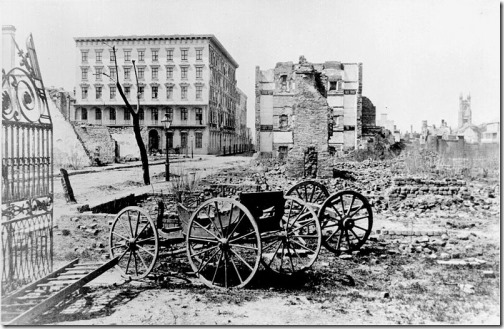
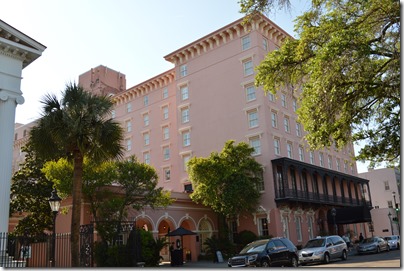
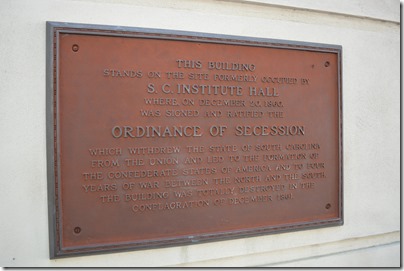
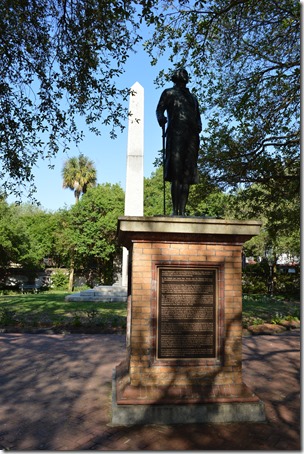
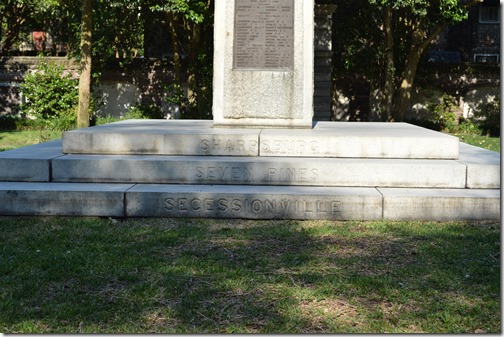
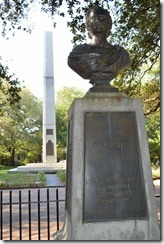
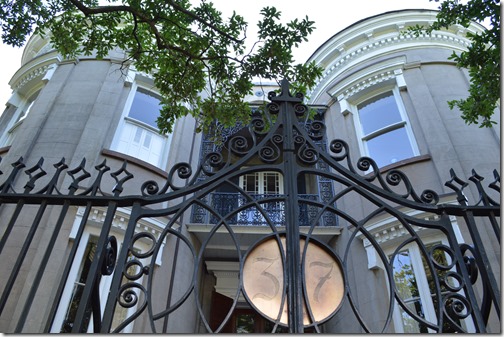
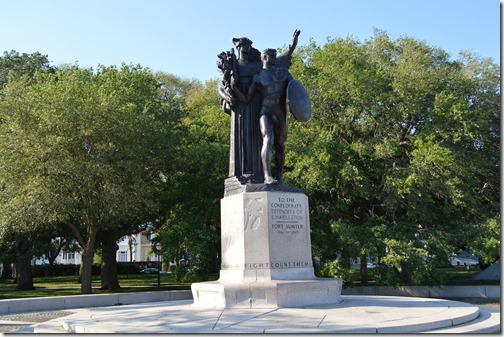
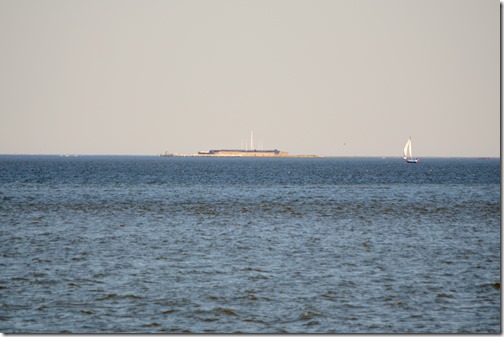
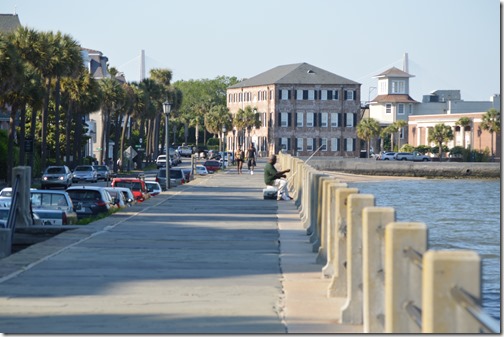
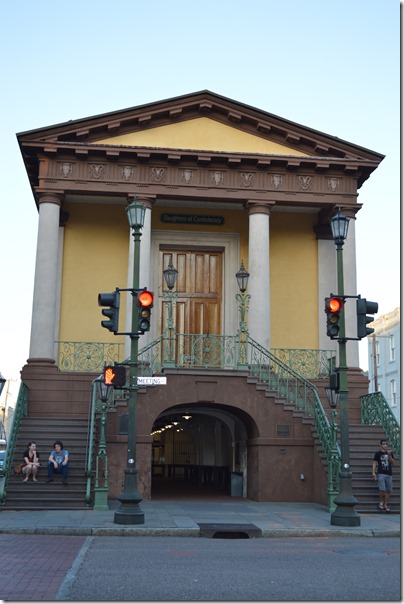
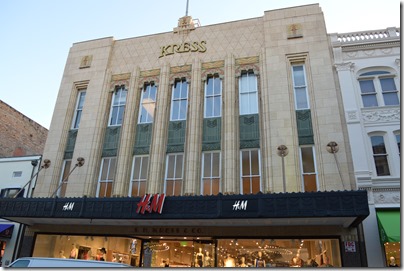
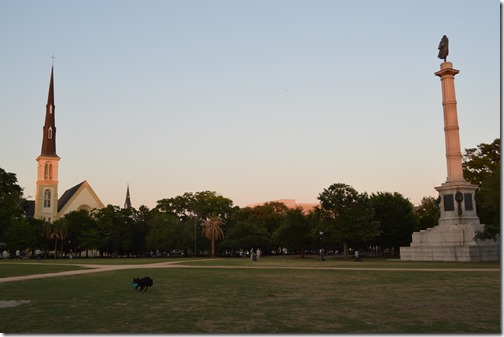

2 Comments
Comments are closed.